Affiliate disclosure: This post may contain affiliate links. Please see our Privacy Policy.
This simple recipe for a homemade herbal burn salve uses a combination of herbs that encourage wound healing, fight infection, alleviate pain, and reduce inflammation.
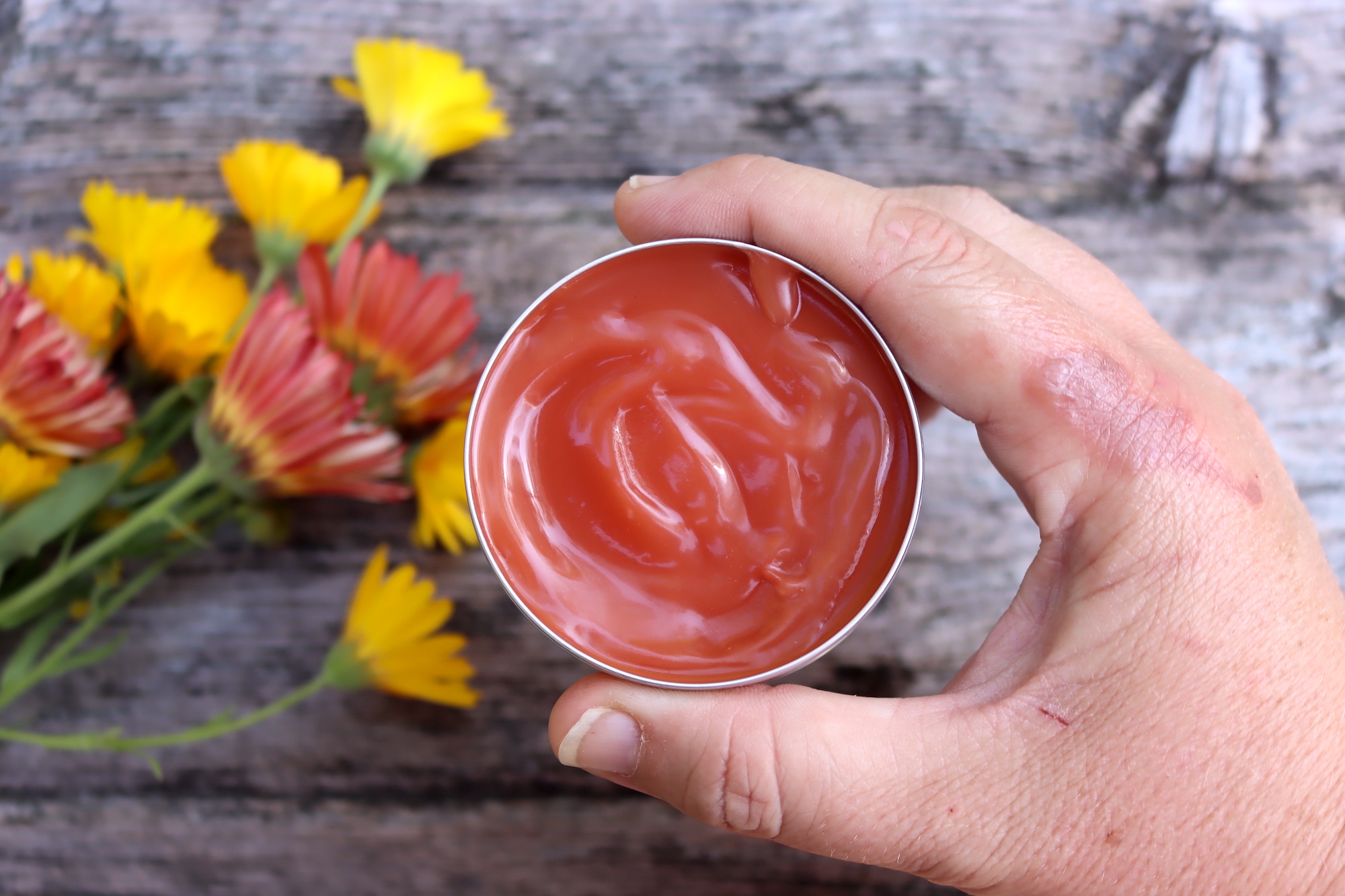
Unfortunately, most of us experience minor burns occasionally. Despite our best intentions, we spend too much time in the sun without protection, bump hot woodstove edges, graze hot pans in the kitchen, or spill hot coffee onto ourselves. Even the mildest burns can create annoying, lingering pain.
If you have kids, it’s likely you’ve dealt with these issues with them, too. Even with the most careful parents, curious, on-the-go kids experience their share of injuries, and it’s so much worse with children. No one wants to see their little ones in tears after burning their fingers on a hot marshmallow from the campfire or cookie sheet in the kitchen. Cooling the burn quickly and using a soothing salve can help alleviate the pain so kids can return to their day.
As you can see in the picture above, I’m using this salve to treat a nasty oil burn on my hand that’s already starting to blister. A splash of 400-degree cooking oil can do that, even if you’re quick to get it cooled under running water.
Even small burns can be incredibly painful. On top of that, they can be entry points for infection. When not cared for properly, burns can become infected with bacteria that can lead to worse issues like sepsis. Keeping them clean and healing them as quickly as possible is critical! Depending on the burn, people can also experience scarring.
This salve recipe contains healing herbs, including comfrey, plantain, St. John’s wort, calendula, and lavender, which help speed burn healing, reduce inflammation and scarring, and soothe pain.
I use this exact salve to treat burns for my own family, and even that nasty burn in the picture above healed completely without leaving a scar.
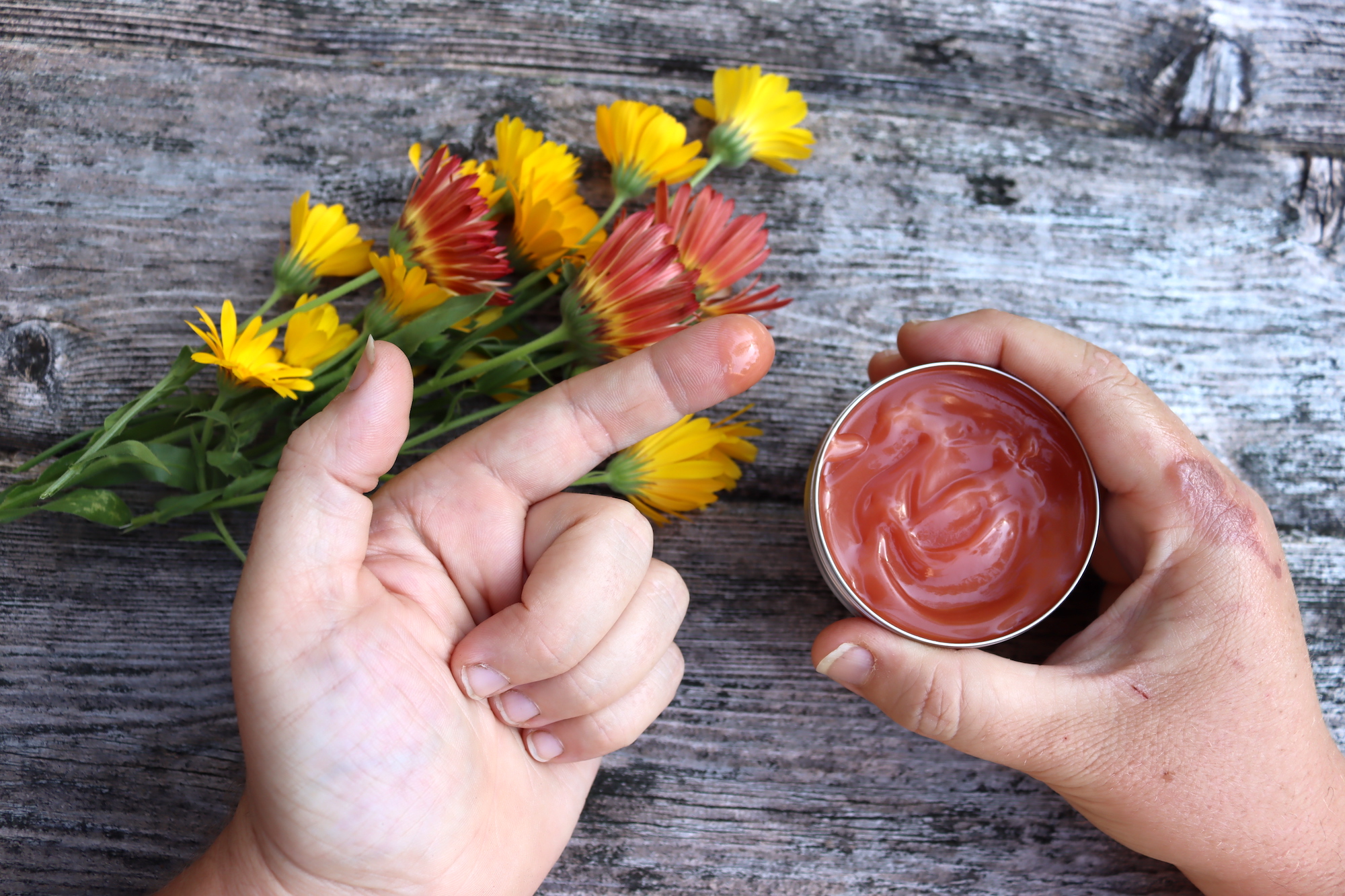
While it’s always good to have a burn salve on hand just in case, this salve can be made in as little as 48 hours using the fast infusion method.
(I know, most of us don’t look for remedies until we already have a problem, myself included!)
If you were hoping for a ready-made salve rather than a recipe guide, I recommend checking Etsy. You may not find the exact recipe, but many small herbalists sell their salves and other remedies there.
Many of these herbs may grow wild near you or can be grown in your own medicinal garden. One of my favorite Vermont seed companies, Earthbeat Seeds, carries all of these medicinal herbs.
(Always discuss severe burns, ailments, and new herbal remedies with your doctor. Severe burns can require specialized treatment, including surgery, to avoid infection and heal properly. Unfamiliar herbs can also have unexpected effects. Herbal remedies can cause allergic reactions, side effects, and interactions with other medications, and supplements. If you’re using wild foraged medicinal herbs, be 100% certain of their identification. It’s easier than you would think to make a mistake. When researching wild plant identification and herbal remedies, always verify your information with multiple reputable resources.)
The Best Herbs for Burns
All the herbs in this salve recipe are common for burn remedies and other herbal preparations. You may be able to find a couple of these herbs growing wild in the woods and fields near your house.
Comfrey
One of comfrey’s old common names is knit bone. Traditionally, this herb was often used as a plaster for broken bones and sprains. It’s also a helpful burn herb as it contains a compound called allantoin, which encourages the growth of new cells and speeds wound healing.
Comfrey is a fairly common perennial in the Borage family with hairy stems and hairy oblong leaves. Its bell-shaped purple, blue, or whitish flowers make comfrey a favorite for beekeepers.
Though not native to North America, comfrey tends to spread and naturalize. You may find it growing wild around old homesites, gardens, and pastures. It’s also easy to grow. You may find comfrey seeds, or you can just get a chunk of root from another gardener. It only takes a small portion of the root to start your own patch, and is ready to divide pretty quickly.

Calendula
Calendula is one of my favorite skincare herbs. Its cheerful yellow flowers have anti-inflammatory, antifungal, antibacterial, and astringent properties that help speed wound healing. I have another salve recipe for fresh calendula that’s great for eczema, cuts, and skin irritation.
Aside from being an important medicinal, calendula leaves and flowers are also edible. It’s also one of the medicinal herbs that almost anyone can grow themselves. You can start calendula from seeds or transplants. It thrives out in the garden or in containers and is beautiful enough to be right at home in a flower bed. It will even fool an HOA.
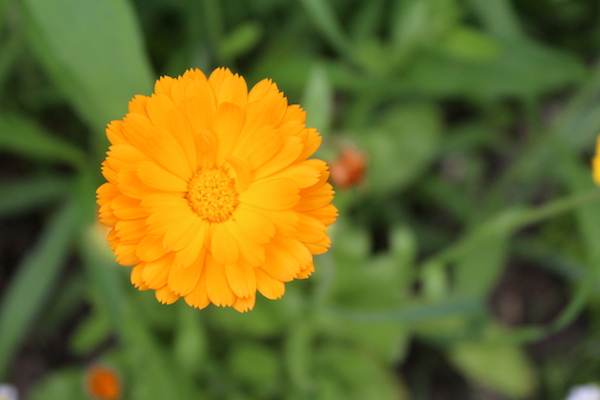
Plantain
Even if you don’t know the name, you probably have seen plantain, and no, I’m not talking about the fruit. The plantain or Plantago family contains about 200 species of small, herbaceous perennials. They’re weedy plants distributed worldwide, with several species either native to or naturalized in the United States. Two common species in Vermont are broadleaf plantain (Plantago major) and Lance-leaf plantain (Plantago lanceolata).
Most plantain species share several characteristics. They have green leaves that form a basal rosette and feature parallel veins. They also send up leafless stems tipped with cylindrical clusters of tiny flowers that give way to seeds. Thankfully, they all share the same medicinal characteristics, so you can use whatever plantain grows near you for this recipe.
Plantain is such a good herb for wound healing that it’s sometimes known as nature’s bandaid. Like comfrey, plantain species contain a compound called allantoin, which helps speed wound healing and displays anti-inflammatory properties.
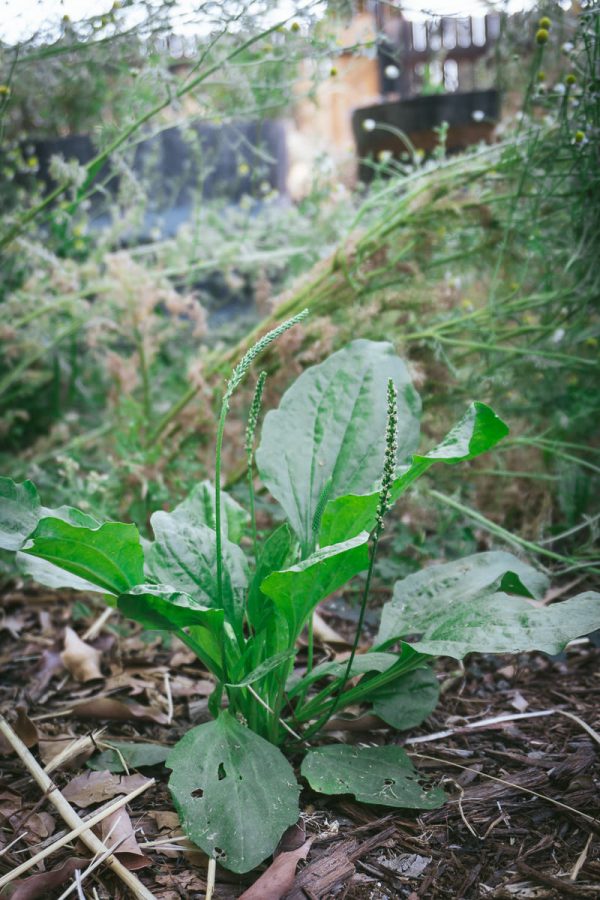
St. John’s Wort
Named for the Order of St. John, this herb was crucial to the order during the Crusades when they used it to heal battlefield injuries. St. John’s wort may speed wound healing and has antibacterial, analgesic, and anti-inflammatory properties.
Though you can purchase dried St. John’s Wort, I recommend sourcing your own whenever possible. St. John’s Wort loses its efficacy quickly. Thankfully, St. John’s wort grows wild in many fields, pastures, gardens, open woodlands, and ditches across North America. It’s so common it’s sometimes considered a noxious weed. If you don’t find it near you, you can also grow some.
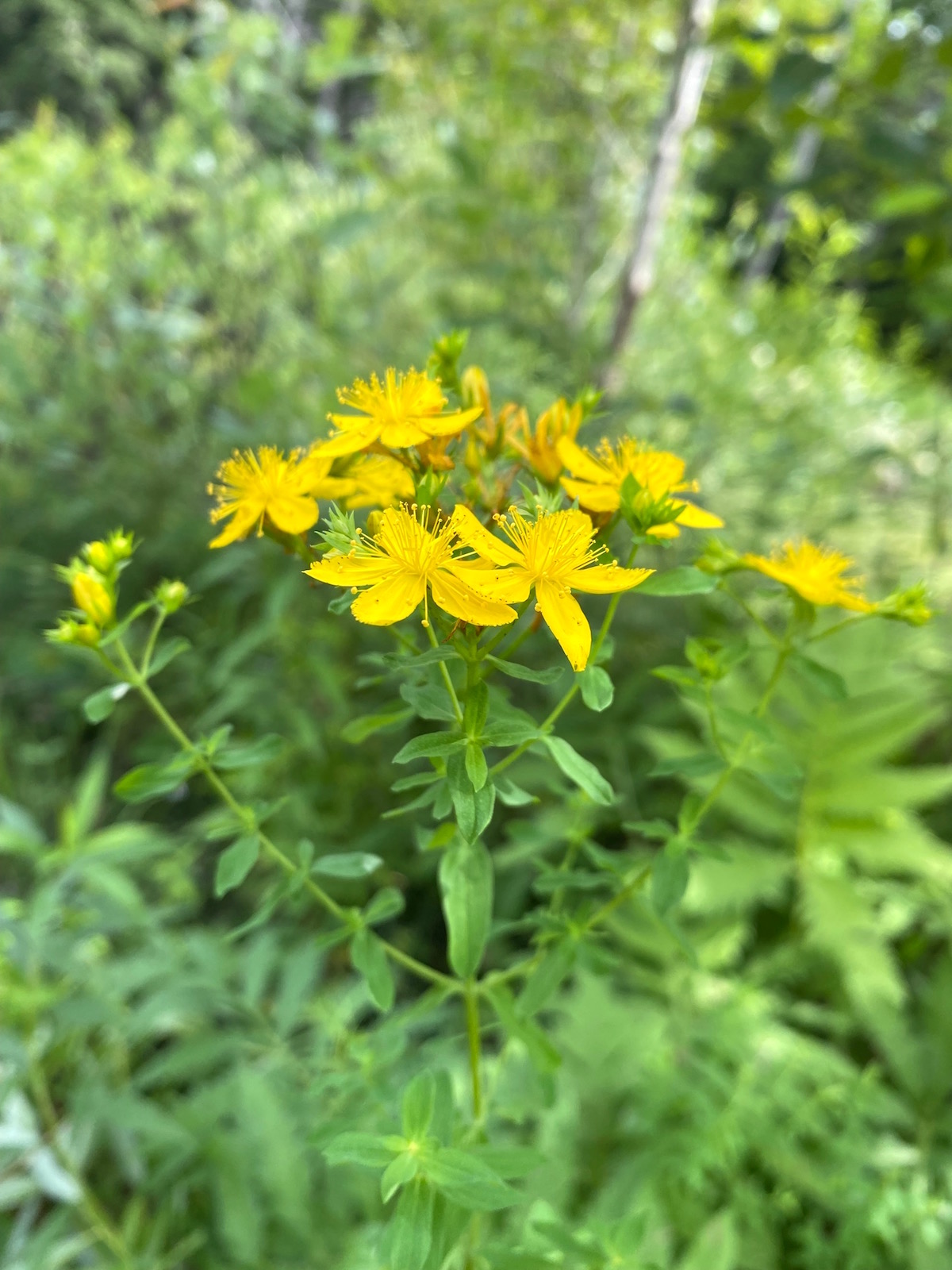
Lavender Essential Oil
Most people know lavender essential oil for its soothing fragrance, but fewer realize it’s also good for wound care. Lavender may help soothe irritated skin, promote wound healing, and reduce pain and inflammation.
Essential oils have seen a boost in recent years, so it should be pretty easy to find lavender essential oil near you. However, I ususally order from Mountain Rose Herbs as I trust them to have quality essential oils and herbs. Not all essential oils are created equal, some are less cocnentrated than others.
If you grow your own lavender, you could add fresh or dried lavender to your infusion for this salve. However, I opt for the lavender essential oil because it is much more potent and concentrated.
Benefits of Herbal Burn Salve
All of the herbs in this salve have been used for centuries and continue to be used medicinally today. While modern studies on herbal medicinal herbs are always somewhat limited, these four have all shown some promise in a modern, scientific context.
While comfrey is often used to treat internal wounds like sprains, joint pain, and broken bones, it may also be equally efficient at treating burns. One of comfrey’s main medicinal compounds, allantoin, has been shown to speed wound healing.
While we don’t fully understand allantoin’s mechanisms, animal studies have shown that it has anti-inflammatory, antioxidant, and antimicrobial effects. Rat studies have also found that it promotes cell growth, reduces scar formation, and reduces the itching and burning associated with conditions like psoriasis.
Calendula is known as a skin care herb, so much so that it has found its way into some modern cosmetic products. This unassuming flower has antimicrobial and antifungal properties that may help prevent infection. Lab studies have also indicated that it speeds up wound healing. One study, in particular, found that calendula spray could speed wound healing in diabetic foot ulcers, which are typically very difficult to treat.
Thanks to its weedy nature, Plantain may be one of the easiest herbs on this list to find, but it’s no less powerful. Like comfrey, plantain contains allantoin and has been shown to improve wound healing, even in difficult scenarios like diabetes patients. It has also been specifically studied for its effect on burns. One small study looking at patients with second-degree burns indicated that a topical plantain ointment was slightly more effective at speeding wound healing than silver sulfadiazine, the traditional treatment for these burns.
As mentioned above, St. John’s wort has long been an essential herb for wound healing. It’s well-known for its antibacterial, anti-inflammatory, and analgesic properties. One of the encouraging studies on St. John’s wort looked at the effect of St. John’s wort oil on cesarian scars. Patients used the St. John’s wort oil three times per day in the 16 days after their surgeries. Compared with a placebo, St. John’s wort oil applications effectively reduced scarring and pain during recovery.
Lavender also demonstrated antioxidant, antibacterial, and antiseptic properties and may be beneficial for treating burns and other wounds. A 2016 rat study found that topical applications of lavender oil helped to speed wound healing and shrinking by promoting tissue regeneration. Lavender’s essential oil also adds a pleasant scent to the salve. Modern research has demonstrated that lavender aromatherapy reduces pain and anxiety levels in burn patients.
Personally, I keep all of these herbs in my household first aid kit and have made individual salves from all four. Burns can be especially tricky and painful, but together, this combination has seriously improved how my family deals with minor burns.
Supplies & Equipment
No fancy equipment, extensive experience, or expensive ingredients are necessary for this salve! These are the items I use, many of which you can find cheaply, can DIY, or may already have in your kitchen.
The first item you need is a double boiler. There are many affordable options, but I actually use a DIY version. Rather than purchasing a double boiler, I use a small stock pot and a mason jar set in the pot on a trivet.
The base of this salve is made with oil that we will infuse with the herbs. You can use any neutral oil, including jojoba, almond, coconut, grapeseed, or olive oil. Personally, I use olive oil. It’s easy to find at the grocery store, and I usually keep some for cooking anyway. All of these oils are nourishing, but feel free to experiment with what works best for you.
When making the salve, we’ll need to thicken the oil. I like to use beeswax for this. It’s a great, nice-smelling natural thickener for salve. Typically, I buy my beeswax in pellets as they’re easy to measure. However, you can use beeswax in any form, whether gathering it from your own hive or cutting off large blocks.
I measure beeswax by weight for salves, so I also use a small kitchen scale for this recipe. You can find affordable ones online, and they’re great to have on hand for baking and herbal remedies. However, if you don’t want to buy one, you can purchase beeswax in pre-measured 1 oz bars. You can also get a reasonably accurate measurement with beeswax pellets and a tablespoon. One heaping tablespoon of pellets is roughly equivalent to one ounce of solid beeswax.
Lastly, we’ll need containers for the finished salve. We’ll pour the salve in while it’s still hot, so I like avoiding plastic. However, you can upcycle glass containers you already own. I like to use small containers for my slaves, so I usually buy the 2 oz metal tins with screw-on lids. They’re great for first aid kits and gifts. I have also used the small quarter-pint mason jars.

DIY Herbal Burn Salve
While this salve has a few more ingredients than my other salve recipes, it’s still suitable for novice herbalists and foragers. I like to use the cold infusion method, which takes about three to six weeks. Don’t worry; you’ll only do about 30 minutes of prep work; the rest is just a waiting period! If you want to learn more about infusion methods and salves, I recommend my guide to herbal healing salves. The process is a bit slow, but I appreciate how simple and easy it is.
However, if you decide to work with fresh plant material, use a rapid warm infusion. There’s a serious risk of fresh plant material going rancid during the cold infusion method. The warm, rapid infusion method involves gently heating the oil, which speeds up the infusion, reducing the risk of spoilage.
(If the cold infusion doesn’t work for you, you can try other infusion methods, including a rapid warm infusion.)
I begin the process by harvesting fresh comfrey, calendula, plantain, and St. John’s Wort. If you’re harvesting herbs like calendula from your own garden, it’s best to harvest in mid-morning, after the dew has dried but before it gets hot out. Look for flowers and leaves that are fresh and undamaged. It’s okay if they’re not perfect. On some plants like St. John’s wort, you’ll likely find flowers in various stages on a single stem.
If you can’t find these herbs growing near you or don’t want to wait for them to grow in your own garden, you can order them online. My favorite source for high-quality medicinal herbs is Mountain Rose Herbs.
I collect all of these herbs as they come into season and air-dry them out of direct sunlight or dry them in my dehydrator. Then, I store them in airtight jars out of direct sunlight until I’m ready to work with them.
To begin the salve, I place my dried herbs into a clean one-pint mason jar, breaking up any large pieces so that the oil seeps in well. Then, I cover them with olive oil (or the neutral oil of your choosing), seal the jar, and set it aside to infuse for three to six weeks.
When you’re satisfied with your infusion, you can strain the herbs out of the oil and compost them. You’ll need a fine mesh strainer or cheesecloth to remove fine pieces of the plant material. You want your oil to look clean, and pieces of herbs can hurt the salve’s shelf life.
Put your clean herbal oil into a mason jar in a pot or a double boiler. Place about 1 inch of water in the bottom of the double boiler and bring it to a simmer. When it starts simmering, add your beeswax to your oil, stirring it in until the mixture is completely smooth.
Turn off the heat and add your lavender essential oil. Mix thoroughly.
Pour your mixture into your salve tins or other containers. Let the salve set up for at least 30 minutes before using. I usually keep a salve for about one year. While still safe to use after a year, salves tend to lose potency over time. If you have more than you think your family will need in a year, your herbal burn salve will make an excellent gift.
Homemade Herbal Salve Recipes
Want to make more healing herbal salves for skin care, poison ivy, muscle aches, and more?
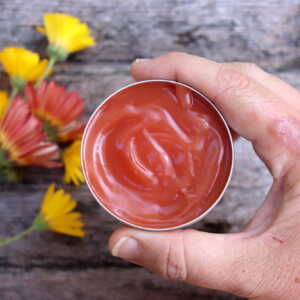
Herbal Burn Salve
Equipment
Ingredients
Instructions
- Add your dry herbs to a mason jar.
- Cover the herbs with olive oil or the neutral oil of your choosing.
- Seal the jar and set it aside to infuse for three to six weeks.
- When you’re happy with your infusion, you can strain out the herbs. You’ll need a fine mesh strainer or cheesecloth.
- Place your clean, infused oil into your double boiler set up, adding about 1 inch of water to the base and bringing it to a simmer.
- Stir your beeswax into the oil until it’s completely blended.
- Turn off the heat and thoroughly stir the lavender essential oil into the infused oil and beeswax mixture.
- Once everything is well blended, pour your salve into tins or glass containers.
- Let the salve cool for at least 30 minutes before using.
Other Ways to Use These Herbs
Want to learn more about using comfrey, calendula, plantain, and St. John’s wort?
- Comfrey Salve
- Comfrey Cream from The Herbal Academy of New England
- How to Grow Calendula
- How to Make Calendula Oil (& Ways to Use It)
- Calendula Tincture
- Herbal Digestive Calendula Tea from Chestnut School of Herbal Medicine
- Plantain Salve
- Plantain Tincture
- Lavender Plantain Lotion from The Nerdy Farmwife
- St. John’s Wort Tincture
Disclaimer on Homemade Herbal Remedies
I have been foraging and using wildcrafted herbal remedies for more than 20 years to treat myself and my family. I try to do extensive research and always use a remedy before sharing it. However, I am not, nor do I claim to be, a clinical herbalist, doctor, or anyone qualified to advise you on your health! This information is just what I have researched and experienced. My intent is to provide a starting point for other folks with an interest in herbal medicine.
While I hope you find some value from my herbal medicine posts, I encourage you to use them as a starting point. Always do your research and fact check with multiple reputable resources.
Even the “safest” herbs can cause adverse reactions. I’ve run into people who are allergic to chamomile, a mild herb available in most grocery stores. Always consult a clinical herbalist or your own physician before trying new wild plants and herbal remedies. All herbs can cause allergic reaches, unintended side effects, or interactions with other supplements, herbs, and prescriptions.
As an herbalist, I’m always learning and encourage you to do the same. One of my favorite resources is the Herbal Academy of New England. They have tons of accurate, safe information. If you’re new to herbalism, I highly recommend their Introduction to Herbal Medicine course or their family herbalist group courses.
Their mushroom course, which covers medicinal and edible mushrooms, and their Botany and Wildcrafting Course were also two of my favorites. They’re great for folks who are interested in safely foraging wild medicines.
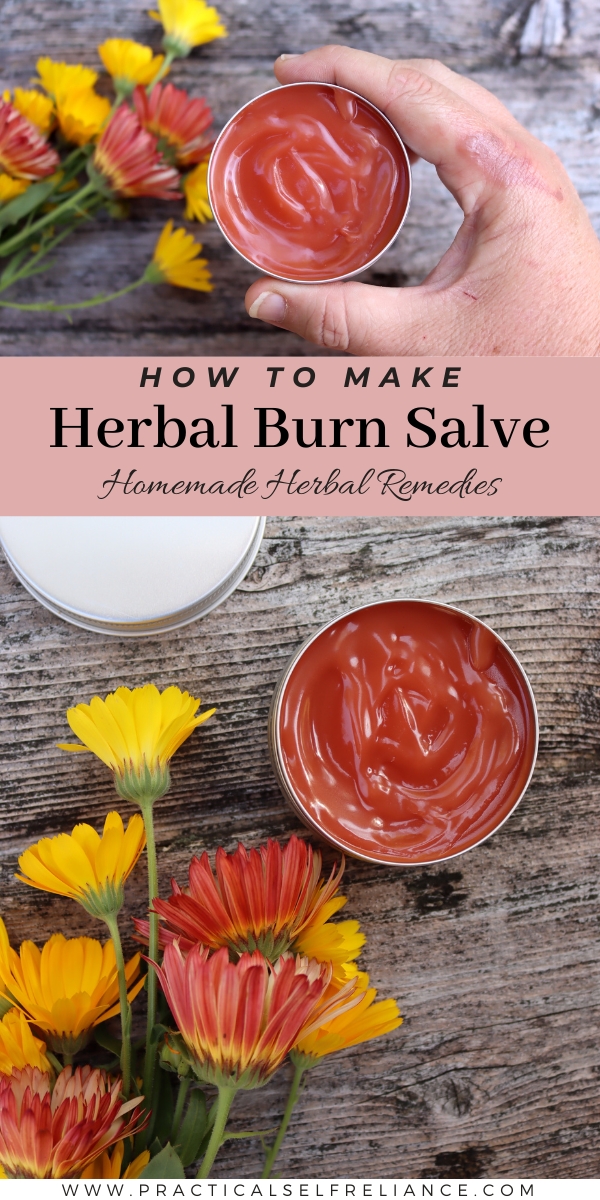
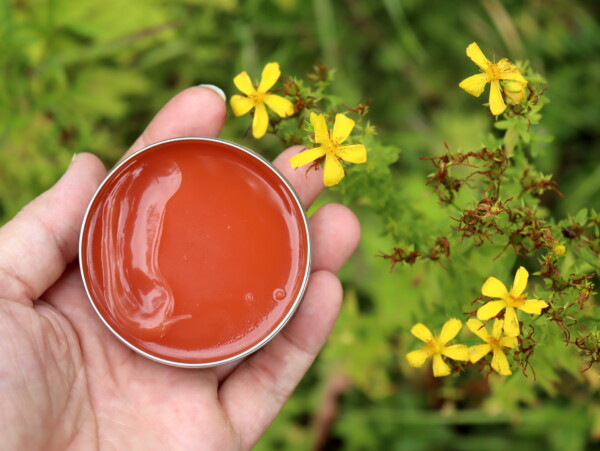
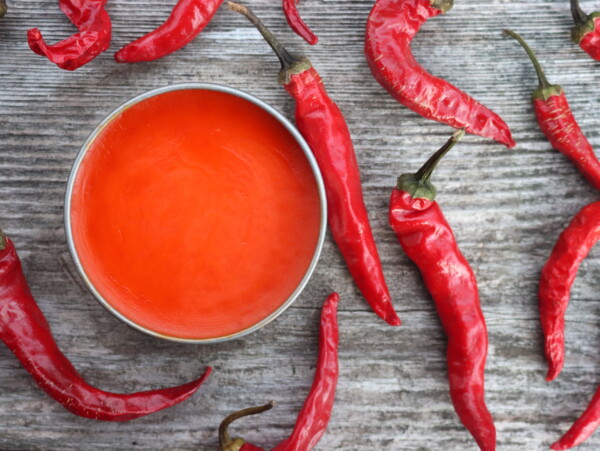
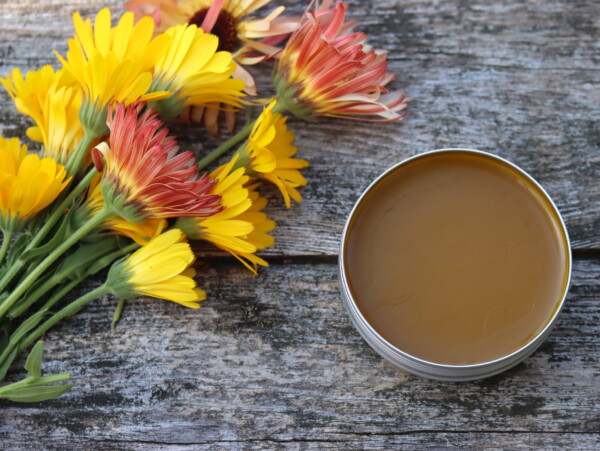
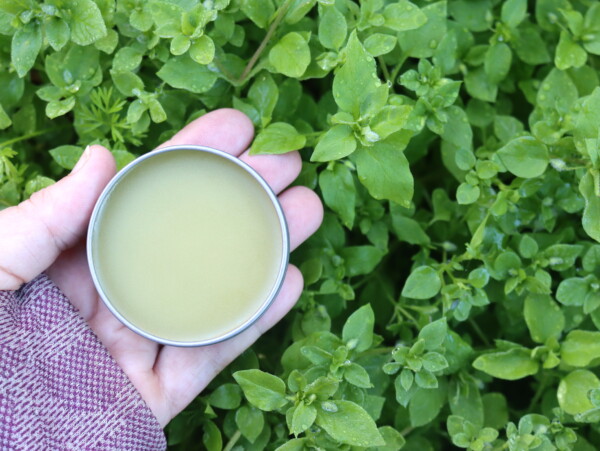










Have you any thoughts on adding in aloe vera which is the main component of modern burn gel.
Aloe contains so much water that it’d make the salve spoil and not be shelf stable. There’s just not a great way to infuse aloe into oil for a salve. You can, however, make an aloe lotion with these other oils, as those do contain water, but you’d have to add preservatives to keep it from spoiling (as you do with any homemade lotion). Modern burn gels have a lot of alcohol in them like hand sanitizer which prevents spoilage (or preservatives, either or).
Hi there! What do you use to give this salve the coloring shown?
The color actually comes from the St. John’s Wort Oil. The fresh flowers have bright red pigments that infuse into the oil (even though they look yellow when you harvest them, crush a few between your fingers and you’ll see the red stain).